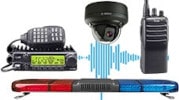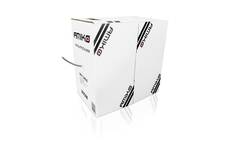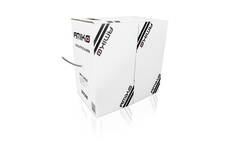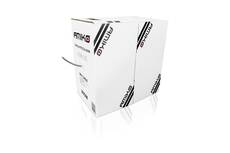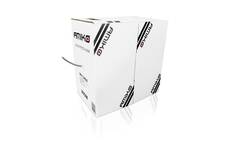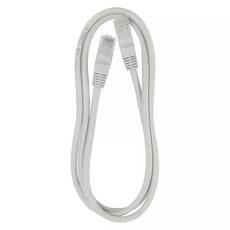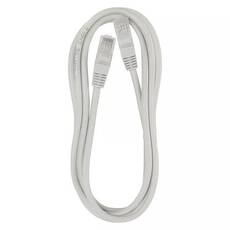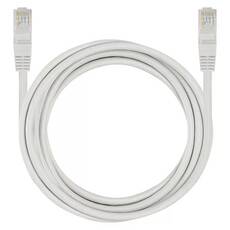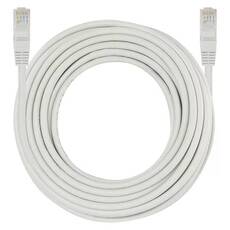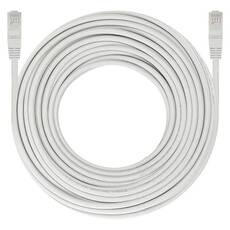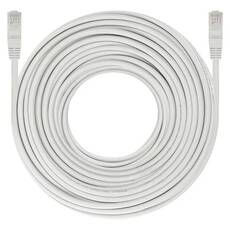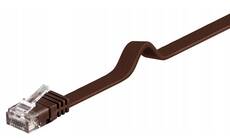Ethernet Cable
- further categoriesIn today's modern world, networking is almost indispensable. Even if you log on to the system wirelessly, there's bound to be a cable connection at the other end. Read more...
• Available as a complete roll (305 m)
• Network Cable
• Rate temperature: 60°C,75°C
• Bare solid copper conductor
• Attenuation at:
- 20 MHz: 9,3 dB / 100 m
- 100 MHz: 22 dB / 100 m
- 200 MHz: 32,4 dB / 100 m
- 350 MHz: 44,9 dB / 100 m
• RoHS/REACH Complied PVC,PE or LSZH Jacket
• Complies to ANSI/TIA-568-B.2&ISO/IEC 11901
• Installation Temperature :-30°C ~+50°C
• Minimum bending radius:>4P 4D
• Available as a complete roll (305 m)
• Network Cable
• Bare solid copper conductor
• Rate temperature: 60°C,75°C
• Attenuation at:
- 20 MHz: 9,3 dB / 100 m
- 100 MHz: 22 dB / 100 m
- 200 MHz: 32,4 dB / 100 m
- 350 MHz: 44,9 dB / 100 m
• RoHS/REACH Complied PVC,PE or LSZH Jacket
• Complies to ANSI/TIA-568-B.2&ISO/IEC 11901
• Installation Temperature :-30°C ~+50°C
• Minimum bending radius: 4D
• Available as a complete roll (305 m)
• Designed for outdoor use
• Network cable (1 GBPS)
• Inner side: 4PRS
• Construction: 0.51mm±0.01mm
• Material: CCA
• Shielding: aluminium foil
• Conductive resistance Ω/100M.20 ℃: ≤65Ω
• Load current (A) 0.5A
• Rated voltage (V): ≤30V
• Operating temperature (℃) ≤75℃
• Network Cable
• Rate temperature: 60°C,75°C
• Bare solid copper conductor
• Attenuation at:
- 25 MHz: 9,5 dB / 100 m
- 100 MHz: 19,8 dB / 100 m
- 300 MHz: 36,4 dB / 100 m
- 550 MHz: 51,8 dB / 100 m
• RoHS/REACH Complied PVC,PE or LSZH Jacket
• Complies to ANSI/TIA-568-B.2&ISO/IEC 11901
• Installation Temperature :-30°C ~+50°C
• Minimum bending radius: 4D
• UTP CAT 5E Category 1M unshielded patch cable with moulded protection
• Cable length: 1 m
• Connectors: RJ45/RJ45
• Cable jacket: PVC
• Cable diameter: 5 mm
• Cable construction: litz wire
• Cable jacket thickness: 1.1 mm
• Inner conductor material: copper clad aluminium (CCA)
• Inner conductor wire diameter: 0,40 mm
• Conductor insulation: HDPE
• Conductive core insulation thickness: 0,22 mm
• Number of conductors: 8
• UTP CAT5E Category 2M unshielded patch cable with moulded protection
• Cable length: 2 m
• Cable construction: litz wire
• Cable jacket: PVC
• Cable diameter: 5 mm
• Cable jacket thickness: 1.1 mm
• Inner conductor material: copper clad aluminium (CCA)
• Inner conductor wire diameter: 0,40 mm
• Connectors: RJ45/RJ45
• Conductor insulation: HDPE
• Conductive core insulation thickness: 0.22 mm
• Number of wires: 8
• UTP CAT5E Category 3M unshielded patch cable with moulded protection
• Cable length: 3 m
• Cable construction: litz wire
• Cable jacket: PVC
• Cable diameter: 5 mm
• Cable jacket thickness: 1.1 mm
• Inner conductor material: copper clad aluminium (CCA)
• Inner conductor wire diameter: 0,40 mm
• Sheath colour: grey (RAL 7035)
• Connectors: RJ45/RJ45
• Conductor insulation: HDPE
• Conductor core insulation thickness: 0,22 mm
• Number of conductors: 8
• UTP CAT 5E Category 5M unshielded patch cable with moulded protection
• Cable length: 5 m
• Cable construction: litz conductor
• Cable jacket: PVC
• Cable diameter: 5 mm
• Cable jacket thickness: 1.1 mm
• Inner conductor material: copper clad aluminium (CCA)
• Inner conductor wire diameter: 0,40 mm
• Conductor insulation: HDPE
• Conductor core insulation thickness: 0,22 mm
• Connectors: RJ45/RJ45
• Number of wires: 8
• UTP CAT 5E 10M category unshielded patch cable with moulded protection
• Cable length: 10 m
• Cable construction: litz conductor
• Cable jacket: PVC
• Cable diameter: 5 mm
• Cable jacket thickness: 1.1 mm
• Inner conductor material: copper clad aluminium (CCA)
• Inner conductor wire diameter: 0,40 mm
• Connectors: RJ45/RJ45
• Conductor insulation: HDPE
• Conductive core insulation thickness: 0.22 mm
• Number of wires: 8
• UTP CAT 5E 15M category unshielded patch cable with moulded protection
• Cable length: 15 m
• Cable construction: litz conductor
• Cable jacket: PVC
• Cable diameter: 5 mm
• Cable jacket thickness: 1.1 mm
• Inner conductor material: copper clad aluminium (CCA)
• Inner conductor core diameter: 0.40 mmConductor insulation: HDPE
• Connectors: RJ45/RJ45
• Conductive core insulation thickness: 0.22 mm
• Number of wires: 8
• UTP CAT 5E 25M category unshielded patch cable with moulded protection
• Cable length: 25 m
• Cable construction: litz conductor
• Cable jacket: PVC
• Cable diameter: 5 mm
• Cable jacket thickness: 1.1 mm
• Inner conductor material: copper clad aluminium (CCA)
• Inner conductor wire diameter: 0,40 mm
• Connectors: RJ45/RJ45
• Conductor insulation: HDPE
• Conductive core insulation thickness: 0.22 mm
• Number of wires: 8
• Cable length: 15 m
• Color: brown
• Structure: U/UTP
• Category: CAT 6 (250MHz)
• Connectors: RJ45/ RJ45
• Internal conductor: 4 x 2 pairs x AWG 32/7 copper
• External diameter: 6 x 1.5 mm
These types of connections are less susceptible to interference and are still preferred over wireless in professional environments such as workplaces or server rooms. Ethernet cables, also known as network or LAN cables, allow for constant data-driven information transfer and exchange.
Why do we need ethernet cables?
The Ethernet protocol was developed in the 1970s to enable data transfer between different devices. Whether for home, office or professional use, it is useful to use a network cable because different radio frequencies can cause WLAN interference. Since this interference can be a real barrier to data transmission, network cables are a suitable and safe alternative. In the multimedia and home entertainment sector, many devices have Ethernet sockets for wired network connections. The cables themselves have eight wires, arranged in a colour scheme, which are twisted together in pairs. In this way, the electromagnetic fields generated during the data flow can be neutralised because they cancel each other out. This design also allows relatively trouble-free operation without shielding. This is known as UTP cable, which has unshielded twisted pairs of wires.
What should we look out for when using ethernet cable?
When buying an Ethernet cable, you should pay special attention to the performance of the cable. Do not fall for cheap offers that try to sell us CAT3 cables! They are no longer sufficient for current network standards. For Gigabit Internet, use at least Category 5 cable.
What is the difference between FTP and UTP cables?
Network cables run 4 pairs of wires, which means that 8 wires are twisted together. Why is this so important? Because the quality of the cable depends on the density of the twists. There are several versions of UTP cable. U/UTP, for example, is an unshielded and standard uninsulated cable. FTP cable consists of a foil-shielded pair of conductors, which is further shielded by another foil.
Which category of Ethernet cable would be best suited to our needs and why?
Ethernet cables are categorised according to their speed, abbreviated as CAT, to make it easier to choose according to your needs. Why is this necessary? Because the bottleneck in the system is the cable itself. There are now eight categories of cable, distinguished by different bandwidths and transmission speeds. It is important to know that the maximum speed calculation for LAN cable always assumes a cable length of 100 metres. But let's look in detail at what each type offers us. CAT3 has an operating frequency of 16 MHz and a maximum data rate of 100 Mbps. This cable type does not have shielding, i.e. it is a UTP cable.
The CAT5 cable has an operating frequency of 100 MHz and a maximum data rate of 1000 Mbps. This type of cable exists in both shielded and unshielded versions. The CAT6 cable has an operating frequency of 250 MHz and a data rate of 10,000 Mbit/s, and is also available in both shielded and unshielded versions. The CAT7 cable has an operating frequency of 600 MHz and a data rate of 10,000 Mbit/s, but this cable has a double shielding. The CAT8 cable category has an operating frequency of 1600 MHz and data rates of 40-100 Gigabits/s.
What are the specific requirements for the ethernet cable design?
We distinguish between straight and crossover cables. A straight cable is used between your computer and an active device, which could be a router or a WiFi signal booster. Both ends of a straight cable have the same colour sequence, which is: orange-white, orange, green-white, blue, blue-white, green, brown-white, brown. But what do we use the crossover cable for? We use it between two computers or two active devices. With a crossover cable, you connect one half of the cable as you would with a straight cable, but the other half is connected the other way round, as you have to swap wire one for wire three and wire two for wire six. Which looks like this: green-white, green, orange-white, blue, blue-white, orange, brown-white, brown.

